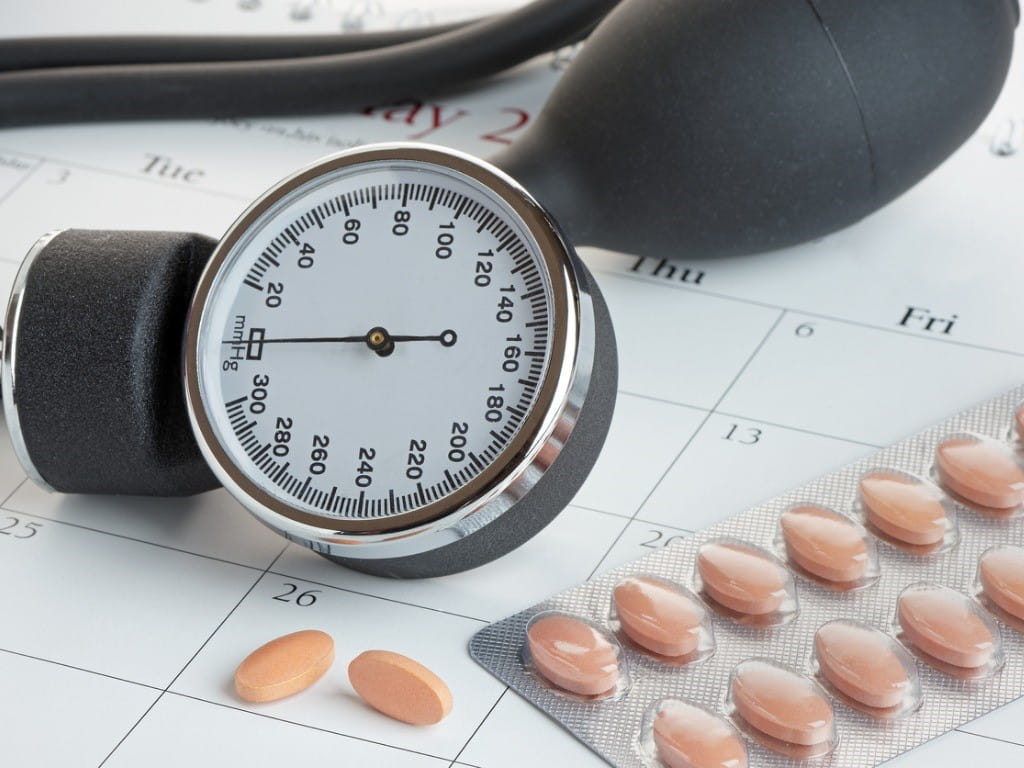Benefits and Side Effects of Indapamide

The Bottom Line
Indapamide is a medication for high blood pressure that appears to be better than many other drugs at controlling high blood pressure while lowering the risk of heart failure. However, indapamide can sometimes cause patients to become dehydrated and lose potassium. Adverse effects can last for several days after the drug is taken.

The Full Story
One in three US adults – about 75 million people – have high blood pressure (hypertension). High blood pressure is diagnosed when the systolic blood pressure (the upper blood pressure number) is greater than 130-140 or the diastolic blood pressure (the lower blood pressure number) is above 80-90 on three or more occasions. Hypertension increases a person's risk of developing serious health problems such as coronary heart disease (including heart attack), heart failure, stroke, and kidney disease.
Controlling hypertension with medication is known to help reduce the risk of these life-threatening events. Several medications are available to treat hypertension. However, it might surprise you to know that an older medicine, indapamide (Lozol), has become a top choice in hypertension therapy due to some unique benefits.
Indapamide is a diuretic (also called a "water pill") approved by the FDA in 1983. Indapamide acts on the kidneys to boost the elimination of sodium, potassium, and water in the urine. This results in increased urination, which lowers blood pressure by reducing the fluid in blood vessels and body tissues. Indapamide also opens up blood vessels, further reducing the blood pressure and easing stress on the heart.
So, what about its unique characteristics? First, indapamide has a longer duration of action and controls blood pressure better than most other diuretics. Second, indapamide has been shown to work better than other types of high blood pressure drugs at preventing heart failure. Finally, a large clinical study showed that the combination of indapamide and another blood pressure medicine (perindopril) reduced the risk of heart attack, stroke, and death in people with type 2 diabetes.
A dose of indapamide lowers the blood pressure for 24 hours or more, so patients only need to take the medicine once a day. However, if adverse effects happen they can last for a long time. After an overdose, unwanted effects such as excessively low blood pressure, dehydration, weakness, and confusion can continue for up to 3 days. A shorter duration is expected if side effects occur after normal doses.
With regular prescribed use, the most common side effects of indapamide are fluid loss and low blood potassium. If the potassium level drops too much, a potassium supplement might be prescribed. You can also add potassium-rich foods to your diet such as bananas, oranges, avocados, spinach, watermelon, and sweet potatoes. Seniors and patients with heart disease should take special care to drink plenty of fluids to guard against dehydration while taking a diuretic.
If an adult unintentionally takes an extra dose of their indapamide, it is not likely to be a problem. Maintaining good fluid intake and monitoring at home for symptoms of low blood pressure (such as dizziness and nausea) are recommended. Safe single doses can range up to 5 mg in most adults, or up to 2.5 mg in those aged 65 years or older. If a child unintentionally gets into indapamide, treatment will depend on age. Since this drug has not been studied in children, monitoring in a healthcare facility might be needed.
What should you do if someone takes too much indapamide? Do not induce vomiting. Instead, check the webPOISONCONTROL® online tool for guidance, or call Poison Control at 1-800-222-1222.
Leslie A. McCament-Mann, PhD, RPh
Clinical Toxicologist
Poisoned?
Call 1-800-222-1222 or
Prevention Tips
- Indapamide can cause dehydration. People who take this medication should be careful to avoid dehydration by drinking plenty of fluids.
- Indapamide can cause low potassium, so your healthcare provider might prescribe a potassium supplement. Foods high in potassium can also be helpful.
- Keep all medications in child-resistant containers and stored away from children and pets.
This Really Happened
Case 1. A 9-month-old girl opened a bottle of indapamide 2.5 mg tablets and spilled them all over the floor. Moments later, the child's mother rushed into the room and was able to remove one tablet from the girl's mouth. There were 45 tablets on the floor, and the bottle originally contained 50 tablets. Since several tablets were missing and there is no known "safe" dose of indapamide in children, Poison Control referred them to the nearest ER. The child did not develop any symptoms of indapamide toxicity during several hours of observation and was able to go home.
Case 2. In a suicide attempt, an 89-year-old man took two mouthfuls of tablets including indapamide and three other medicines (theophylline, methyldopa, and acetaminophen). He developed dangerously low blood pressure, low potassium, and increased urination that lasted nearly 5 days. He required treatment with intravenous fluids, potassium, and special medications to raise his blood pressure. It took 8 days for him to fully recover from the overdose. Although indapamide was not the only drug taken, the overdose effects were consistent with indapamide's toxicity.
For More Information
References
Poisoned?
Call 1-800-222-1222 or
Prevention Tips
- Indapamide can cause dehydration. People who take this medication should be careful to avoid dehydration by drinking plenty of fluids.
- Indapamide can cause low potassium, so your healthcare provider might prescribe a potassium supplement. Foods high in potassium can also be helpful.
- Keep all medications in child-resistant containers and stored away from children and pets.
This Really Happened
Case 1. A 9-month-old girl opened a bottle of indapamide 2.5 mg tablets and spilled them all over the floor. Moments later, the child's mother rushed into the room and was able to remove one tablet from the girl's mouth. There were 45 tablets on the floor, and the bottle originally contained 50 tablets. Since several tablets were missing and there is no known "safe" dose of indapamide in children, Poison Control referred them to the nearest ER. The child did not develop any symptoms of indapamide toxicity during several hours of observation and was able to go home.
Case 2. In a suicide attempt, an 89-year-old man took two mouthfuls of tablets including indapamide and three other medicines (theophylline, methyldopa, and acetaminophen). He developed dangerously low blood pressure, low potassium, and increased urination that lasted nearly 5 days. He required treatment with intravenous fluids, potassium, and special medications to raise his blood pressure. It took 8 days for him to fully recover from the overdose. Although indapamide was not the only drug taken, the overdose effects were consistent with indapamide's toxicity.
